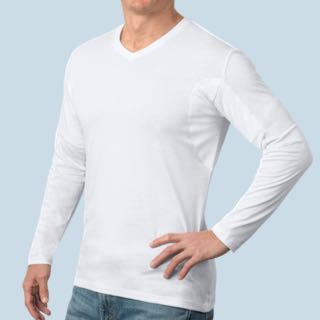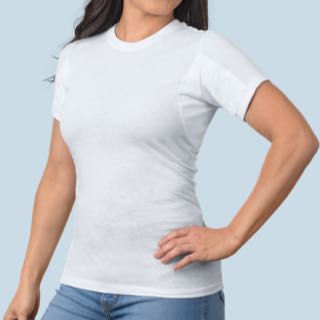How to Layer for Cold Weather
Braving winter temperatures can be brutal, especially if you aren’t equipped with proper cold-weather clothing. Not to mention, the Centers for Disease Control and Prevention (CDC) has issued warnings about cold-related illnesses such as hypothermia and frostbite. The best way to prevent these and other issues, aside from simply avoiding cold weather, is to dress appropriately for it.
But dressing for the cold can be trickier than it seems.
Beyond wearing a heavy parka or coat, you also want to layer effectively with a sweat proof undershirt and a quality middle layer. Below, we’ll provide some more context for why layering in cold weather matters, along with some advice on how to dress effectively for winter weather.
Why Layering for the Cold is Important
Clothing layers help keep you dry, which is crucial for staying warm. Being cold and damp also puts you at a higher risk of hypothermia, which may be life-threatening. In fact, according to the Mayo Clinic, if a body’s temperature drops below 95 degrees Fahrenheit (35 Celsius), it’s a medical emergency.
Layering is one of the key factors Mayo Clinic recommends for preventing hypothermia.
But hypothermia isn’t the only reason to layer in winter. For some people, excessive sweating, even in cold weather, is a problem. People with a condition called hyperhidrosis often sweat excessively for no apparent reason, no matter what the weather conditions are. If you have hyperhidrosis, layering your clothing in cold weather is essential for both safety and comfort.
Dressing in layers prepares you for any situation, as winter weather can be unpredictable. As a general rule of thumb, you should always check your local weather report before getting dressed. That will allow you to pick clothing that will insulate you throughout the day. But you should also build in some room for temperature fluctuations of at least ten to twenty degrees to be safe.
The bottom line: Whether it’s 60 degrees F or -10 degrees F, layers can be a lifesaver.
How to Dress in Layers for Cold Weather
Layering is one of the best ways to dress effectively for cold weather because it offers a balance of warmth and flexibility. Combatting cold requires two important factors:
- Snugness – Cold-weather clothing should be snug but not tight. A snug fit allows air to circulate. A common misconception about dressing in layers is that the layers should be tight. But having a thin layer of air between your skin and clothing can actually help to insulate you against the cold, keeping breezes out while retaining your body’s warmth.
- Adaptability – Spikes in weather may necessitate adding or removing layers to maintain a comfortable body temperature. One of the biggest challenges in wearing clothes for cold weather is staying comfortable both indoors and outdoors. Layering allows you to add or remove clothing as necessary to maintain a “just right” body temperature.
Dressing in layers is especially important for the second factor. If all you have to protect against the cold is a heavy outer layer (e.g., a puffer jacket) and just a plain undershirt, it can be hard to adjust to rapid temperature fluctuations—both indoors and outdoors—on a cold day.
How to Layer Clothes in Winter in 3 Steps
As we hinted at above, there are three main layers to consider for warmth in cold weather:
- A base layer for moisture absorption
- A middle layer for sustained insulation
- An outer layer for elemental protection
Each of these layers builds upon the others, so they work best in concert. This makes layering for cold weather a straightforward, step-wise process.
Here’s how to nail each layer.
Step 1: Start with a Drying Base Layer
The best base layer for cold weather is a close-fitting undershirt. Ideally, the base layer is snug enough to cling to the skin comfortably without restricting movement. It should also have some moisture-absorbing properties that pull sweat away from your body and into the outside air.
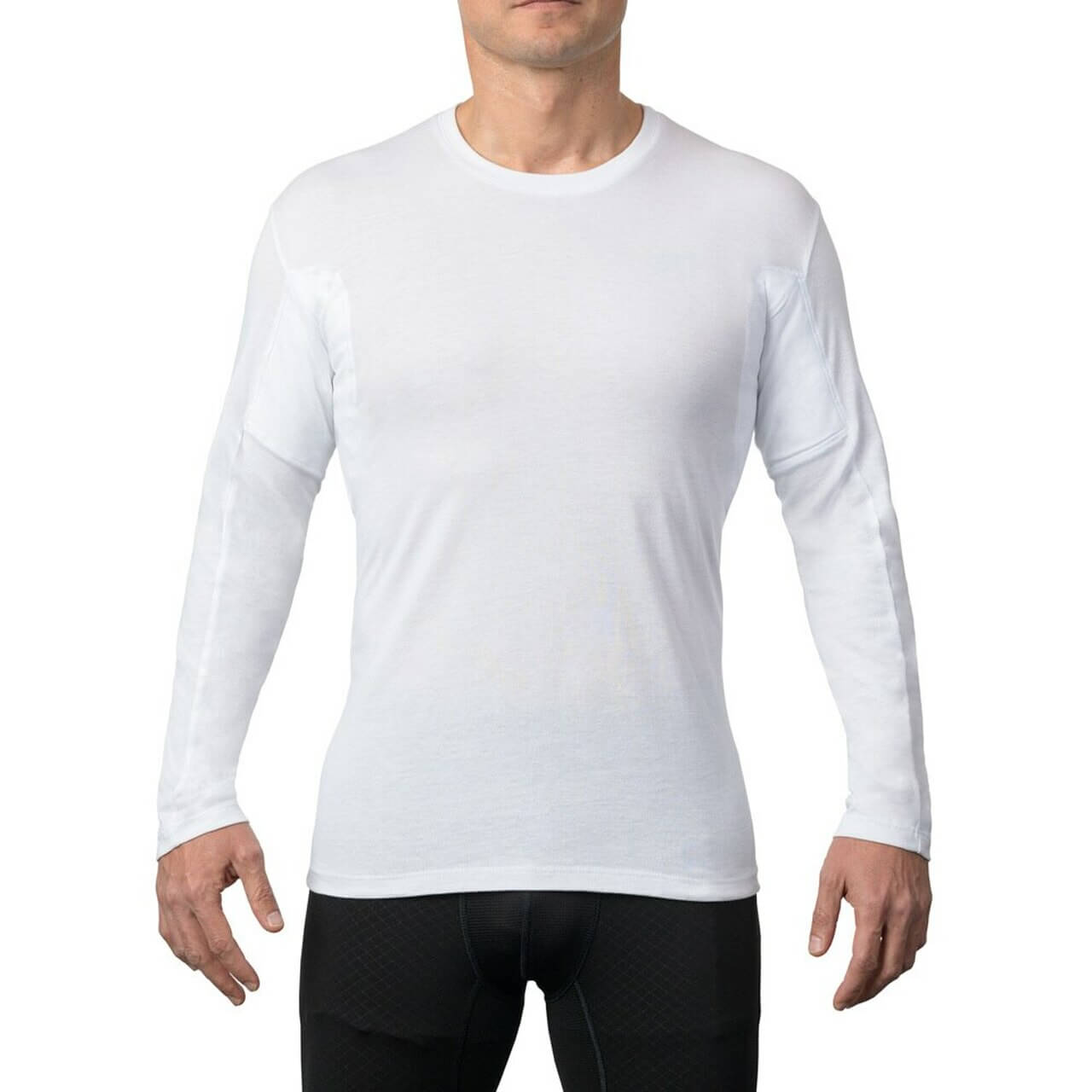
Moving sweat away from your skin keeps it dry, which is your first defense against the cold. If your skin is damp, the cooling process of evaporation sets in. This can cause shivering and a chill that can be impossible to stop—at root, your body is actively trying to cool itself off with sweat.
Thompson Tees’ sweat proof undershirts for men and women are a great base layer option for cold weather. Each shirt features patented Hydro-Shield technology that traps sweat to prevent it from escaping as vapor.
Step 2: Add a Warming Middle Layer
The middle clothing layer traps body heat, insulating you from the cold. The better the middle layer retains your body heat, the warmer you’ll be—regardless of outside stimuli like cold wind.
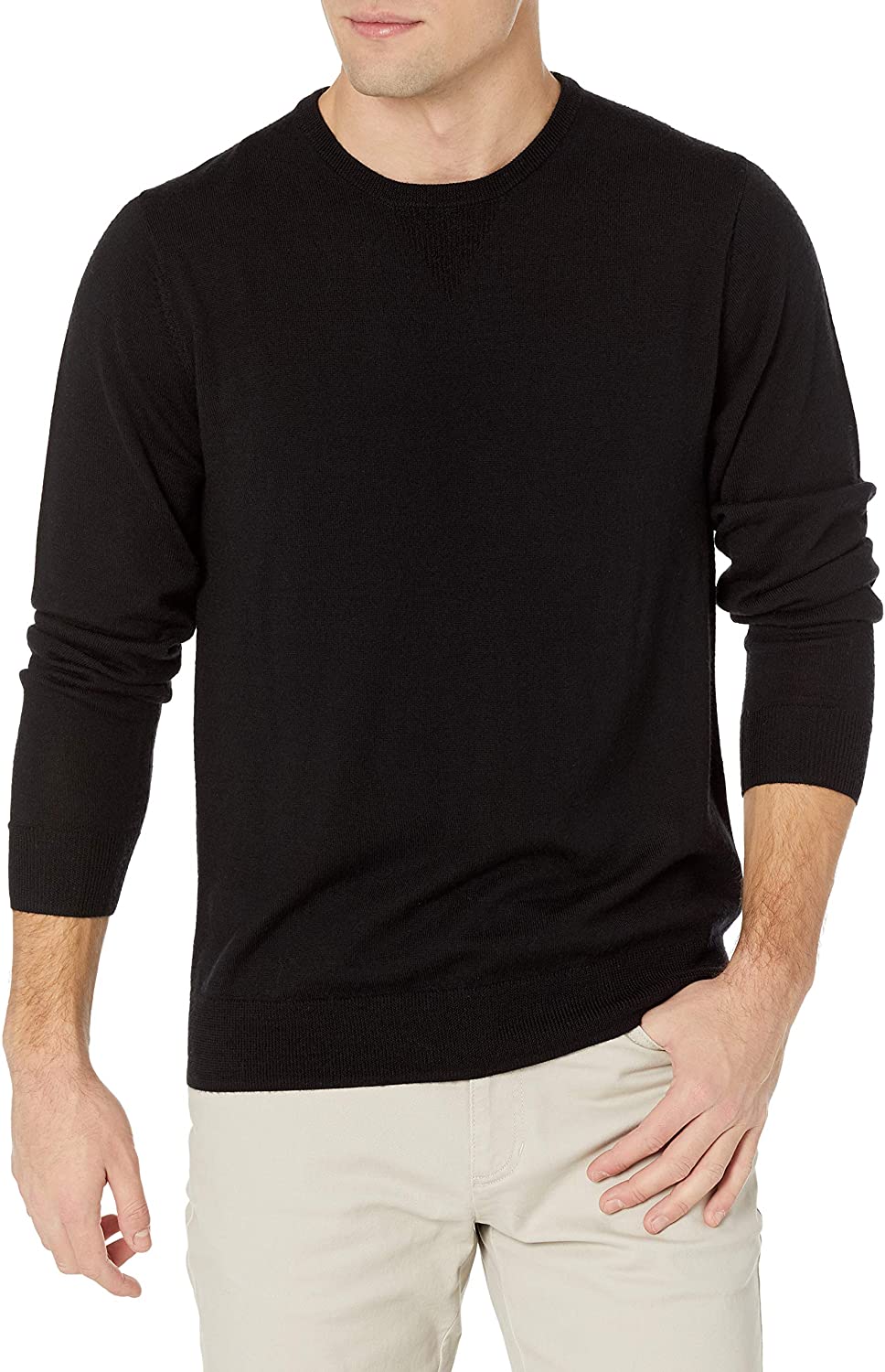
Mid-layer garments are available in a wide range of options, both synthetic and natural. There are Polyester and Merino wool sweaters, sweatshirts, flannel and fleece. Lightweight down also works, but is less effective if it gets wet. Fortunately, all of these popular choices operate to similar effects, even if by different means. You can opt for thick fabrics or multiple layers of thin fibers to create barriers that trap warmth.
A recent roundup of science-backed advice for cold-weather wear notes that fabrics like wool and fleece are especially effective for the middle layer because of how well they trap warm air.
Step 3: Lock in Heat with Protective Outerwear
The outer layer is a coat or jacket that shields you from wind, rain and snow, keeping your inner layers dry. Unfortunately, too many people skip the first or second layers and jump straight to an outer layer. Even the best coat, by itself, is not an ideal defense against bone-chilling weather.
When selecting an outer layer, remember that it will be covering two other layers. This means it needs to be roomy enough to fit over other garments without being too tight or restrictive.
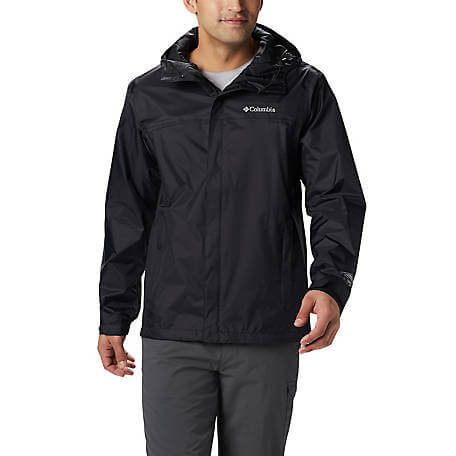
There are two types of outer layers to consider: waterproof and water-resistant.
Waterproof jackets and coats protect against heavy rain and snow. They are also often labeled as “windproof,” which means they’re designed to defend against heavy winds that carry both cold air and moisture in the form of water and ice. Waterproof garments are typically expensive, but the investment is worth it if you regularly endure severe weather conditions.
Meanwhile, water-resistant garments have a water-repellent exterior finish that repels moisture to keep you dry in light rain or snow. Water-resistant jackets and coats are best for drier climates that only see rain on rare occasions. They’re usually breathable and allow excess body heat to escape.
An additional outer “shell” can be added as a fourth layer if you’re doing activities in very wet conditions for extended periods. The shell layer is a thin, sturdy waterproof jacket that offers wind resistance and extra protection against heavy rain and snow. This can be paired with a more insulation-focused jacket (i.e., a puffer) to build on the benefits of a strong middle layer.
How to Keep Your Head, Hands, Legs and Feet Warm
Layering is one of the most effective ways to keep warm in the winter, but it’s not the only kind of protection you should be using. You need to keep other important body parts warm, as well.
Many people believe that body heat escapes primarily through the head, but that’s not entirely true. Body heat can escape from any exposed body part, so it’s essential to cover up all the way to stay warm. Hats, gloves, pants and boots perform the same function as clothing layers. They absorb moisture, keep warmth in and protect you from the full impact of cold air and moisture.
Here are some best practices for keeping these critical parts of your body warm:
- Head – Even if your jacket has a hood, adding a wool cap or beanie provides an extra layer of insulation. Consider adding a balaclava (ski mask) to protect your face and ears in extreme cold, and don’t hesitate to pop your hood on over your hat, mask and scarf.
- Hands – Sometimes pockets aren’t enough. Insulated gloves or mittens provide extra protection for your hands in frigid weather. While mittens keep your hands warmer than gloves, they can be challenging to manage if you need to use your fingers. As an added touch, a handheld pocket warmer can really help in the coldest, windiest conditions.
- Legs – Flannel-lined pants, such as jeans or courdoroys, are a great option to keep your legs warm if you’re outside in cold, dry conditions for extended durations (i.e., three or more hours). Denim and other common pants fabrics can hold moisture, so adding insulated overalls may be a good idea if you’re outside in rainy or snowy weather.
- Feet – Boots protect your feet and ankles from the cold, in addition to providing extra traction on icy or wet surfaces. Add a pair (or two!) of thick wool socks for warmth, but make sure you size your boots accordingly for the extra padding. Tucking pants or longer undergarments into your socks or boots can also help with insulation and water repellency.
Wearing hats, gloves, quality pants and boots will build on the foundation of warmth that your under, middle and outer layers provide. In other words, all these garments work together to protect you from the elements and ensure you stay comfortable when the weather outside is frightful.
Stay Warm and Dry With Thompson Tee
One of the best ways to avoid issues like hypothermia and frostbite is to layer effectively. That starts with a base layer, like Thompson Tee’s sweat proof undershirts. Whether you sweat heavily or not, staying warm requires pulling moisture away from the body. Thompson Tees’ comfortable, sweat proof undershirts are ideal for layering in the cold—or wearing year-round at any temperature.
Thompson Tees keep you dry and comfortable while also preventing sweat stains that can ruin your middle and outer layers. Plus, Thompson Tees are available in both short-sleeved and long-sleeved options for maximum flexibility and protection in warm or cold weather.
To learn more about our comfortable base layers and undershirts, explore our collections today!

